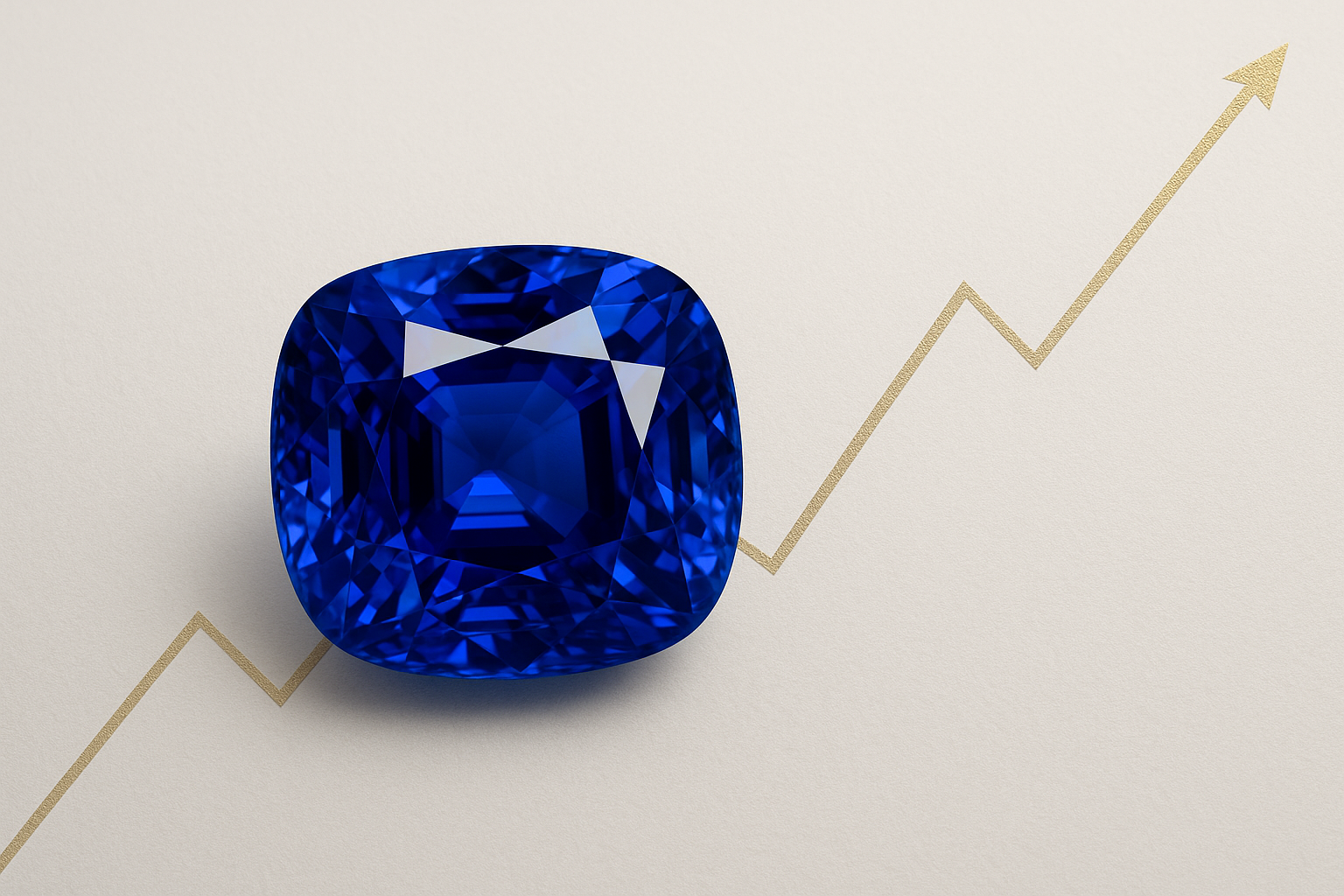
Your opinion is important to us!
Help us improve by filling our quick survey

Mins Read
|
October 4, 2025
In a world of volatile stock markets and fluctuating currencies, savvy investors are increasingly looking beyond traditional financial instruments to build resilient portfolios. You're likely here because you understand the principle of diversification but are now evaluating tangible assets that offer stability and growth potential independent of public market swings. The challenge isn't just finding an alternative, but finding the right one—an asset class with a proven history of value appreciation and low correlation to your existing holdings.
This is where investment-grade natural sapphires enter the conversation. More than just beautiful gemstones, they represent a unique asset class that combines rarity, portability, and consistent demand. The global gemstone market is projected to grow from $36 billion to over $68 billion by 2035, and colored gemstones are leading that charge. This guide provides the framework you need to evaluate natural sapphires not as a speculative purchase, but as a strategic component of a sophisticated wealth preservation strategy.
For an asset to be investment-grade, its value drivers must be clearly understood. While most are familiar with the "4 Cs" (Color, Clarity, Cut, Carat), the world of high-caliber sapphires requires a far more nuanced understanding. This is where casual buyers are separated from serious investors. True value lies in a combination of factors that signal rarity and enduring desirability.
Understanding the interplay of these factors is key. A smaller, untreated sapphire from Kashmir can be vastly more valuable than a larger, heated stone from a less prestigious origin. It’s this level of detail that informs our advanced valuation techniques for serious collectors.

The primary purpose of diversification is to mitigate risk by holding assets that don't move in lockstep. Natural sapphires have historically demonstrated a low correlation with traditional financial markets like stocks and bonds, making them a powerful hedging tool against economic uncertainty.
While past performance is not a guarantee of future results, the data paints a compelling picture. According to the International Gem Society, high-quality, unheated Burmese blue sapphires (2-5 carats) have shown remarkable average annual price increases, including +19% in 2021, +36% in 2022, and +28% in 2023. This isn't the volatile, headline-grabbing fluctuation of a speculative stock; it's the steady appreciation of a rare and finite resource.
Unlike gold, which is priced almost exclusively by weight and purity, a sapphire's value is a complex matrix of quality factors. This means a top-tier sapphire can be worth significantly more than its equivalent weight in gold, offering a more concentrated store of value. When evaluating tangible assets, many investors compare sapphire vs ruby vs emerald, and while each has its merits, sapphires often provide a more accessible entry point into the top tier of investment-grade gemstones.
Incorporating sapphires into your portfolio requires a deliberate and informed approach. This isn't about market timing; it's about strategic allocation and rigorous due diligence.
A critical, and often overlooked, aspect of any investment is understanding its tax implications. Transparently addressing this component is essential for making a fully informed decision and avoiding future surprises.
In many jurisdictions, including the United States, investment gemstones are classified as "collectibles." This has specific tax consequences that differ from those for stocks or bonds.
Given the complexity, it is crucial to consult with a qualified tax professional or financial advisor who specializes in alternative assets. They can provide personalized advice based on your financial situation and jurisdiction, ensuring your investment strategy is fully compliant and optimized.
How liquid is an investment in sapphires?
While not as liquid as publicly traded stocks, the market for high-quality, certified sapphires is robust. A top-tier stone with proper documentation can be sold through reputable dealers, auction houses, or private sales. Liquidity is directly tied to the quality and rarity of the stone—the better the asset, the stronger the demand.
How do I ensure I'm buying an authentic, natural sapphire?
This is where certification is paramount. Never purchase an investment-grade stone without a report from a leading independent lab like GIA or SSEF. Furthermore, partner with a supplier who can provide full traceability back to the mine. At Ceylons, our direct control over our Sri Lankan mining operations guarantees authenticity and ethical provenance.
Aren't diamonds a better investment?
While diamonds are a popular choice, the market for colorless diamonds is largely commoditized and controlled by a few major players. In contrast, the market for colored gemstones like sapphires is driven by rarity and individuality. There are emerging certified gemstones market trends that favor the unique characteristics and supply constraints of fine sapphires, offering significant appreciation potential.
What is the minimum investment required?
Unlike real estate, you don't need hundreds of thousands of dollars to start. A strategic acquisition can begin with a high-quality, certified sapphire in the low five-figure range. The key is to focus on the quality metrics outlined above, not just the total carat weight.
You've now seen the data-backed case for natural sapphires as a tangible, high-growth asset with low correlation to traditional markets. You understand the critical importance of quality, provenance, and expert guidance in making a sound investment decision.
The next step is to move from evaluation to action. A strategic investment in hard assets begins with a conversation. We invite you to connect with one of our gemstone experts for a private consultation. We can help you understand the current market, review available investment-grade sapphires, and build a strategy that aligns with your financial goals.
Explore our curated collection of investment-grade sapphires or schedule your consultation today to build a more resilient and diversified portfolio for the future.
Sign up to our newsletter now and get it directly to your mailbox.
CEYLONS | MUNICH stands for the finest Ceylon sapphires. A brand committed to responsible mining of Sri Lankan gemstones obtained in an ethical manner.